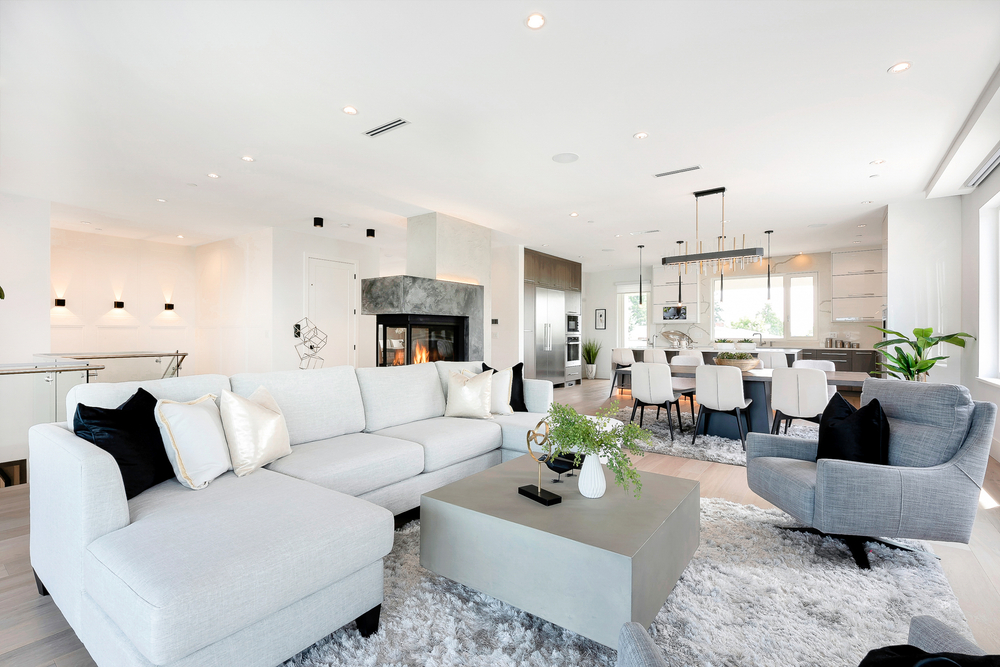An open concept floor plan is a great option if you want to create the appearance of more space without actually increasing the square footage of your home. While an open concept is great for entertaining and can add resale value, there’s more to it than just knocking down some walls. Going about it the right way is important to maintain the structural integrity of your home. If you’re looking to open up your space, here’s what you need to know before you get started.
Find Your Inspiration
Every great renovation starts with the right inspiration. From magazines to design websites and blogs, there’s no shortage of inspiring open concept homes. Take some time to browse and come up with your ideal layout. Having an idea of what you want the final product to look like will make getting started much easier.
Once you start talking to pros about your project, show them your inspiration pictures so they know exactly what you’re looking for. Keep in mind that your ideal open concept layout may not be possible with your home, but your pros will work with you to figure out how to give you something as close to your inspiration as possible.
Who to Hire
Now that you have an idea of what you want your space to look like, the next step is to find the right pros to make your vision come to life. The average homeowner might assume that to create an open concept look, all they need is to knock down some walls. Sounds easy enough, right?
The truth is there is a lot involved with knocking down walls. Knocking down walls without knowing what’s behind them can cause all sorts of costly and sometimes dangerous problems. Your home’s plumbing and electricity are carefully hidden behind walls and knocking them down will take out these essential items. You don’t want to risk a flood or being electrocuted just to open your main floor.
This is why it is essential you hire the right pros for the job. For the average open concept project, you will require the help of an architect and a general contractor. You may also need the help of additional pros such as an interior designer, a structural engineer, a plumber, an electrician, and flooring and ceiling specialists. The number of pros you will need to complete your project depends on your home’s structure and what your vision is for the final look.
The Process
You will need the support of pros with this project and the first pro you will need to hire is an architect. Talk to them about what you want to be done and show them your inspiration pictures. This will give them a better idea of what you’re looking for and they will be able to see if an open concept layout is feasible with your home. Remember, only a professional will know how to best deal with moving plumbing and electrical components. Once they have surveyed your home, they will draw up plans to best match your vision. An architect will also be able to tell you how involved your project will be, what permits are required and if you will require the help of a structural engineer.
A structural engineer is necessary when your plans are complex or you require special arrangements to keep your house structurally sound. For example, removing a load-bearing wall requires other supports to be put in place. A structural engineer’s job is to figure out how to keep your house standing during the removal and how to keep it standing once the wall is gone.
With so many pros involved in this project, it’s a smart idea to hire a general contractor to keep track of everything. A general contractor is like a project manager, they will take care of hiring, scheduling and paying the various additional trades needed. Once you’ve spoken to your architect and have found out if you need a structural engineer, hire a general contractor to get things moving.
Extras to Keep in Mind
One thing many homeowners don’t realize when they decide to open their main floor is the amount of “patchwork” that will be needed afterwards. With all of your interior walls gone, you will need to match your flooring, walls and ceilings so that they all look like they belong in one cohesive room. In many cases, especially in older homes, it is too difficult to match up the original flooring and so new flooring must be laid throughout the main space. The same must often be done with your walls and ceilings to seamlessly blend the old and new. Be sure to factor these costs into your overall budget.
An open concept floor plan is a great choice for those who want to create the appearance of more space. Having no walls between your rooms allows for better entertaining and can help make your home more social. An open concept main floor is also great for resale, whether you’re looking to sell now or later. If you’re ready to get started, be sure to find the right pros for the job so that you can safely enjoy your new open concept home.
Article Updated June 2022




